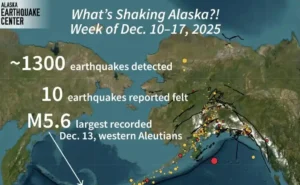Alaska’s economy depends on its job rate, which shows its workforce stability. In 2023, the rate stayed at 4.2%, showing Alaska’s ability to handle tough times. Despite a sharp rise to 8.3% in 2020, Alaska’s ability to bounce back showcases resilience. This narrative underscores the state’s capacity to adapt and persevere in challenging times, contributing to a deeper understanding of its economic landscape.
This blog looks at how Alaska’s Unemployment Rate impacts businesses and workers. We’ll see how companies cope and how people deal with it. You will also find the Alaska unemployment statistics to understand better how it affects the Alaskan economy.
Alaska Labor Market Analysis
Alaska’s labor market is dynamic and influenced by various factors that shape its economy and workforce. Here’s a closer look at key trends and challenges:
1. Labor Force Participation and Unemployment
Alaska boasts higher labor force participation rates than the national average, driven by a relatively younger population. However, like the rest of the country, Alaska is witnessing a decline in participation rates due to its aging population, particularly the retirement of Baby Boomers.
2. Job Growth and Openings
After facing significant job losses during the state-level recession, Alaska experienced modest job growth of 1,600 in 2019. Despite this, the state continues to grapple with job openings, with 23,000 reported in December 2023.
3. Impact of Nonresident Workers
Alaska heavily relies on nonresident workers, especially in the seafood processing and tourism industries. In 2018, nearly 21% of Alaska’s workforce comprised nonresidents, highlighting the challenges in filling specific job roles with residents, as reported by Laborstats.Alaska.
4. Economic Challenges
The state’s economy needs help with its dependence on declining oil-related revenue. Balancing the budget remains a hurdle, necessitating difficult decisions regarding the Permanent Fund Dividend and taxation. Limited and seasonal job opportunities, particularly in rural areas, further compound these challenges.
5. Future Outlook
Alaska’s labor market indicates a growing need for workers, particularly in industries with seasonal fluctuations or specialized skills. The reliance on nonresident workers and economic challenges will likely shape the state’s labor market in the foreseeable future.
Alaska Unemployment Statistics
| Metric | February 2024 | January 2024 | February 2023 |
| Unemployment Rate | 4.70% | 4.60% | 3.90% |
| Long-Term Average | 7.58% | – | – |
| Job Openings (December 2023) | 23,000 | – | – |
| Labor Force Participation | Higher than the national average, Declining | – | – |
| Nonresident Workers | 20.9% | – | – |
| Economic Challenges | Dependence on declining oil revenue; Budget balancing issues | – | – |
Impacts of Unemployment Rate Alaska on Businesses and Workers

The impacts of Alaska’s Unemployment Rate on businesses and workers are multifaceted. The state’s unemployment rate, which was 6.0% in 2021, has implications for both sectors:
Impacts on Businesses:
- Worker Shortage: The worker shortage in Alaska has intensified due to the low rate of unemployment, making it challenging for businesses to find willing workers.
- Wage Increase: With fewer available workers, businesses have had to raise wages, especially in traditionally low-wage jobs, to attract employees.
- Economic Growth: Alaska’s unresolved long-term state government revenue problem drags the economy, impacting businesses as they navigate financial challenges.
Impacts on Workers:
- Job Opportunities: A low Unemployment Rate means more job opportunities for workers as hiring increases and workers feel optimistic enough to quit their jobs or leave the labor force.
- Wage Growth: The tightening labor market has led to wage growth, with wages paid by Alaska employers climbing above year-ago levels.
- Population Decline: Alaska’s population decline, partly due to people leaving the labor force, can impact workers by limiting the need for services and infrastructure, affecting job prospects.
Job Loss Affects on Alaskan Economy

Alaska has faced tough times, especially during significant changes like the NAFTA-WTO era and the COVID-19 pandemic. Here’s how job losses affected the state:
NAFTA-WTO Period:
During this time, Alaska lost 3,275 manufacturing jobs, a significant 23% drop. This hurt the economy because it meant people had less money to spend, affecting many industries that rely on having enough workers.
COVID-19 Pandemic:
The pandemic brought uncertainty and job losses to Alaska. In April 2020, a whopping 42,200 jobs were lost compared to the year before. Almost every sector, except the Federal government, felt the pinch.
The hardest-hit industry was Leisure and Hospitality, which lost 48.1% of its jobs. Even though things improved slightly in May 2020, overall employment was still much lower than the previous year. It’s predicted that by the end of the year, Alaska will have 25,000 fewer jobs than in 2019.
These tough times show how important it is for Alaska to bounce back stronger and create more stable jobs for its people.
Conclusion
In conclusion, the economy and workforce of the state face challenges and opportunities shaped by the unemployment rate in Alaska. Businesses contend with worker shortages and economic uncertainties while workers navigate job opportunities and wage growth. The impacts of job losses from the NAFTA-WTO period to the COVID-19 pandemic underscore the resilience and adaptability of Alaska’s economy. Looking ahead, addressing economic challenges, and fostering job growth are vital for Alaska’s recovery and prosperity. By understanding these dynamics and working towards solutions, Alaska can build a more stable and inclusive economy for its residents.
FAQs
Why is Alaska’s unemployment rate so high?
Alaska’s unemployment rate is low compared to the long-term average. In February 2024, it was 4.70%, lower than the long-term average of 7.58%. However, Alaska does face some economic challenges, such as dependence on the oil and gas industry and seasonal unemployment patterns, which may contribute to fluctuations in the unemployment rate.
How many people are jobless in Alaska?
According to the Current Population Survey (CPS) data, Alaska had 16,700 unemployed residents in 2023. This indicates the number of individuals actively seeking employment but could not find jobs then.
Why is Alaska struggling economically?
Alaska faces economic challenges primarily due to its heavy dependence on the oil and gas industry, which has experienced declining production and lower prices in recent years. This reliance on a volatile industry has led to budget deficits for the state government and the need to consider new revenue sources like taxes. Additionally, seasonal unemployment challenges, particularly in rural areas, and a reliance on nonresident workers in some industries contribute to the economic struggles.
What is the economy of Alaska?
Alaska’s economy is diverse but dominated by a few key industries. The most significant contributor is the oil and gas production sector, which accounts for over 80% of state revenues. Other important industries include commercial fishing, seafood processing, tourism, and federal government spending, including military bases. However, manufacturing and agriculture play relatively minor roles in Alaska’s economy.












